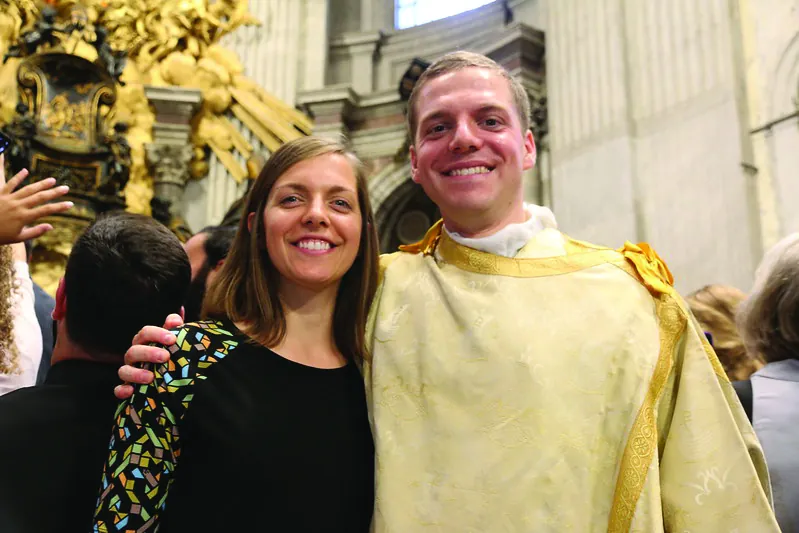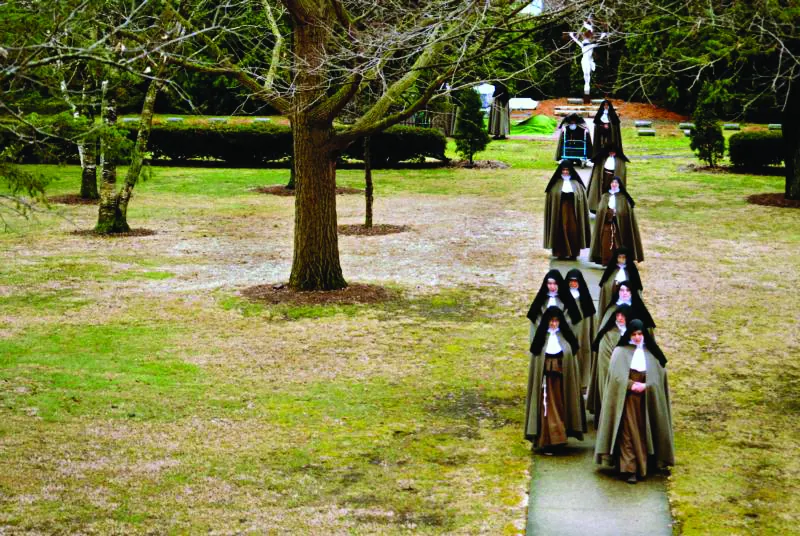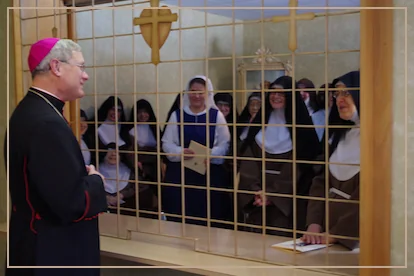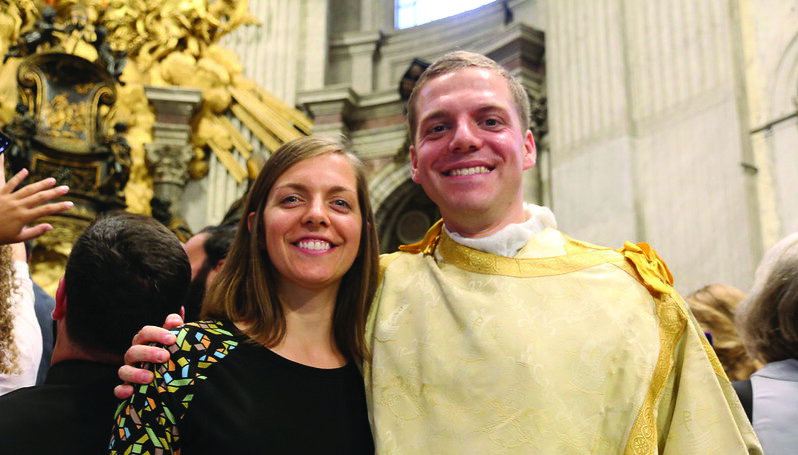Their son is studying to become a priest; their daughter is a nun; they’re all members of Catholic Order of Foresters.
Deacon Tony Klein has been preparing for the priesthood for many years — he just didn’t know it. Growing up, he sang in choir, acted in plays, and played soccer. “I think anything where I had a lot of experience being the only one speaking…made the priesthood less intimidating,” he said.
The youngest of three children, Tony’s journey toward the priesthood began in Sioux Falls, South Dakota, where he attended Catholic grade school and high school. After a confirmation retreat one year, he began taking his faith seriously. He came to discover, in a deeper way, what vocations were, and realized “in the midst of all of this preparation for the future, there was another aspect that I hadn’t looked at: what is God’s desire for me?” he explained.

For Tony, that question turned into a prayer, “Lord, what did you create me for, and what do you want of me?” Through this prayer, a vision of the priesthood became clear. “That prayer created openness in me,” he said. “The idea of the priesthood that had been planted inside me did not go away.”
In 2012, he began priestly formation at St. John Vianney Seminary at the University of St. Thomas in St. Paul, Minnesota. St. John Vianney Seminary houses more than 120 men from around the country who study philosophy in preparation for the priesthood. During his time at St. Thomas, the prayer that began in high school started resonating with Tony. “The more I got to know God, the more I got to know myself, and the more I got to know the priesthood,” he said. What started as God’s desire became his own desire. “I looked at that prayer and said, ‘I think this is what I want — the priesthood.’”
As his time at University of St. Thomas ended, something surprising happened. He was asked to continue his studies at the Pontifical North American College, a seminary in Rome for American men entering the priesthood. “I was shocked and humbled,” he said, regarding his qualification for the college.
Four years and a myriad of experiences later, Tony said the city of Rome has become his teacher. “The city taught me patience and adaptability,” he said. He met pilgrims, tourists and students from all over the world. “There are those who are angry at the Church and those who know nothing about the Church, but all of them are brought to Rome for whatever reason. I saw the Lord make a lot of paths cross; God reaches so many people through different avenues.” Rome is also a reminder that the Church has existed for 2,000 years. “To pray at St. Peter’s tomb is a reminder of what unites the Church to Christ,” he said.
He even crossed paths with Pope Francis on multiple occasions. During this past Epiphany at St. Peter’s Basilica, Tony assisted the Holy Father as he celebrated Mass. “Chanting the Gospel at Mass with the pope was an unexpected grace,” he said. “As I stood at the altar, I felt like I was entering the pope’s ministry.” He also met with the pope at a later time and was struck by his sheer compassion. “It would be exhausting to meet hundreds of people a day, but you never see it externally wear on him,” he said.
While he prepared for his vocation at the Pontifical North American College in Rome, his sister prepared for hers at Corpus Christi Monastery of the Poor Clares in Rockford, Illinois, a religious order founded by St. Clare of Assisi, a contemporary of St. Francis. The formation process for the Poor Clare sisters takes nine to 12 years, a time in which they have very little contact with their families. In-person family visits only happen with both parties separated by a metal grille. This idea behind this process is further explained on the monastery’s website: “The vow of enclosure requires a complete self-despoliation, the delivering up of even legitimate worldly rights to a full freedom of communicating with outsiders and the enjoyment of places and things in the world.”

The Poor Clares maintain a lifestyle with traditional roots in the 15th century, never leaving monastery grounds except in an emergency. Their daily tasks include making communion bread, maintaining the monastery, and spending eight hours per day in intentional prayer time.
If a woman is interested in joining the Poor Clares, she meets with the order’s Mother Abbess. Prospective nuns who live far from Rockford typically meet with her over the phone, or, if they wish, will stay for a longer visit. Mother Abbess recalled that when she first spoke with Collette, she thought she was from the Rockford area, so she asked her to stop by for an afternoon visit. Collette enthusiastically agreed, but unbeknownst to Mother Abbess, immediately drove over seven hours from Sioux Falls, South Dakota, all the way to Rockford. Collette was confident in her call to the join the cloister. Now a Poor Clare herself, she was unavailable to comment because of the order’s vow of enclosure. The Mother Abbess called Collette a fine nun who skillfully plays the organ for Mass and the Divine Office.

Rockford, speaks with Poor Clare sisters through a metal
grille.
After his ordination to the diaconate at St. Peters’ Basilica in October 2019, Tony visited the Rockford monastery, proclaimed the Gospel, and preached the homily at a Mass before the nuns. Collette told him that it seemed right to see him on the altar.
While some may think the Klein family had an extraordinary childhood, Tony said that he and his siblings had a normal upbringing “that God took and ran with.” Praying together as a family before meals and before bed “goes a long way,” he said. “My parents laid the foundation well.”
Tony is set to be ordained to the priesthood in May of this year. He and Collette are both members of Catholic Order of Foresters.
Article by Nick Sentovich and Kaitlynrose Bicek
